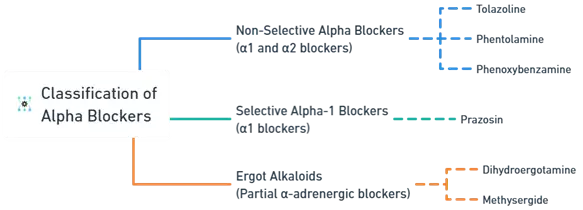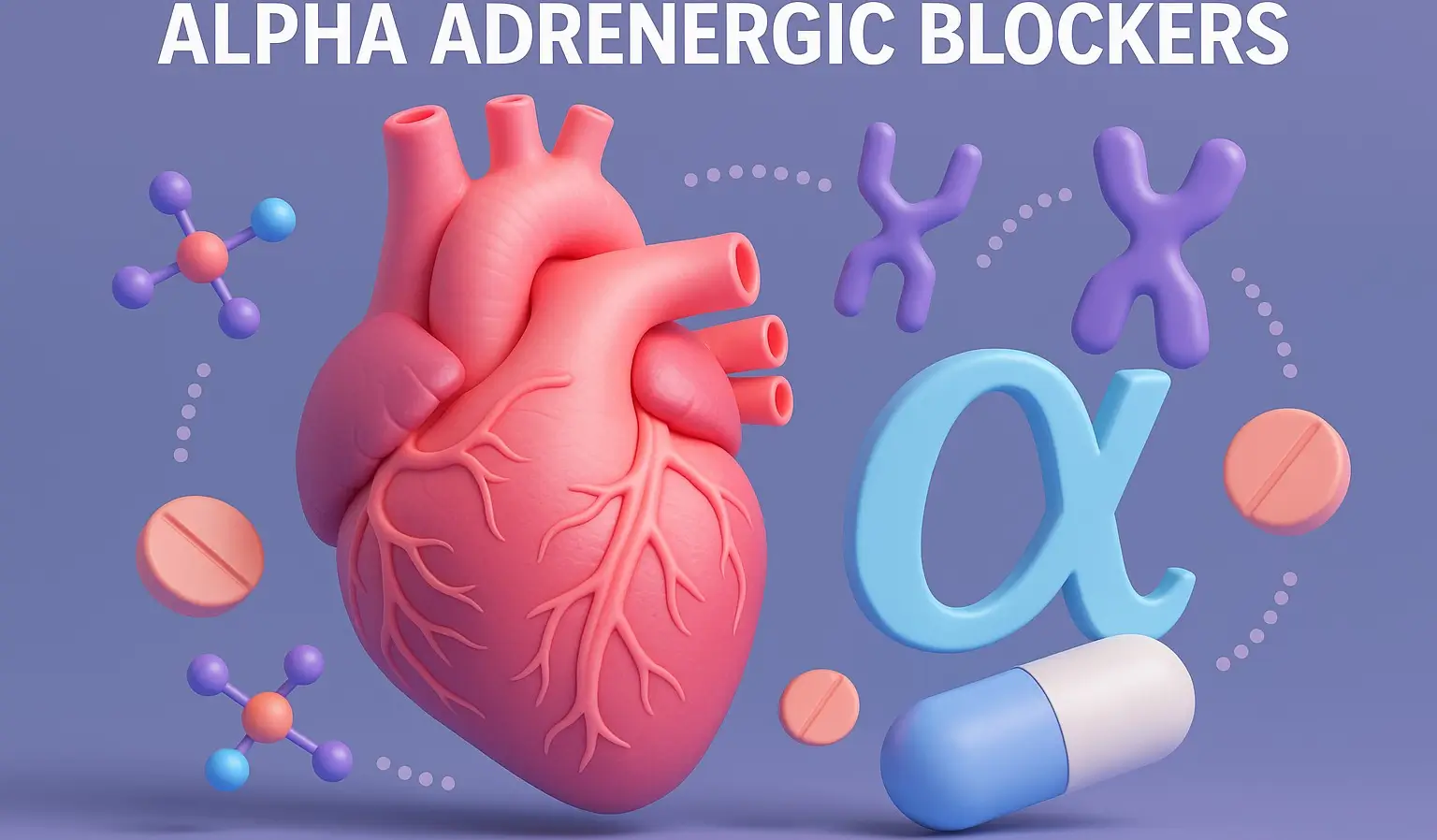- Alpha Adrenergic Blockers inhibit the activation of alpha-adrenergic receptors (α1 and α2), leading to vasodilation and decreased blood pressure.
- These drugs are commonly used for Alpha Adrenergic Blockers conditions such as hypertension, pheochromocytoma, and benign prostatic hyperplasia (BPH).
Classification:

- Alpha blockers are classified into non-selective and selective types:
-
Non-Selective (α1 and α2 blockers)
- These block both α1 and α2 receptors, leading to vasodilation but may also cause reflex tachycardia.
- Example drugs: Tolazoline, Phentolamine, Phenoxybenzamine
-
Selective Alpha-1 Blockers (α1 blockers)
-
Ergot Alkaloids (Partial α-adrenergic blockers)
- These drugs have partial alpha-blocking effects and are used for migraine prophylaxis and vascular disorders.
- Example drugs: Dihydroergotamine, Methysergide
Effects of Alpha Blockers
- Vasodilation → Decreased blood pressure
- Reduced peripheral resistance
- Increased heart rate (reflex tachycardia in non-selective blockers)
- Relaxation of smooth muscles in the bladder and prostate
Click Here to Watch the Best Pharma Videos

